I’m just back from the Brimfield Antiques Fair, the largest in the country. Held three times a year, it’s a truly amazing event, spread out along three miles of bucolic road in Brimfield Massachusetts, with thousands of vendors filling acres of open fields with tents. This year, I was able to find some really wonderful pieces for the Restoration, and it was my first thought to show you a few of them here. But then it occurred to me, rather than just share pictures, why not give you, our supporters, the chance to participate directly in completing the Restoration? (We really need your help, our coffers are near empty again!) So an idea was born: from now on, I’ll regularly post notices of new acquisitions here on the blog. These pieces will then move to a new section on our website, “Adopt an Antique” where they will wait exspectantly until some kind soul takes them under their wing. Once they find “a home,” their generous sponsor will be permanently memorialized on our website, as well as in a bound printed book that will reside in the Suite. It’s a great way for you to help us out, and have some fun at the same time. And what a nice present or commemoration for a friend or loved one! Best of all, you can keep coming back for more!
So here are our first batch of “children,” wide-eyed and waiting for your attentions!

ITEM: CORNER CHAIR
DATE: LATE 19TH CENTURY
MATERIAL: WOOD AND BAMBOO
PROVENANCE: NEW YORK
LOCATION IN SUITE: FDR’S BEDROOM
SIZE: APPROX. 36″ TALL
ADOPTION PRICE: $250
This is a spectacular piece, quite rare, in the Oriental ball and stick style so popular in the late 19th century. Called a corner chair, its name is something of a misnomer: it’s armless design was originally inspired not to fit the architecture, but rather so that gentlemen wearing a sword – on either side – could sit down without taking it off. Nonetheless, these chairs became popular features for odd nooks, and we have just such a one in FDR’s bedroom.
•••
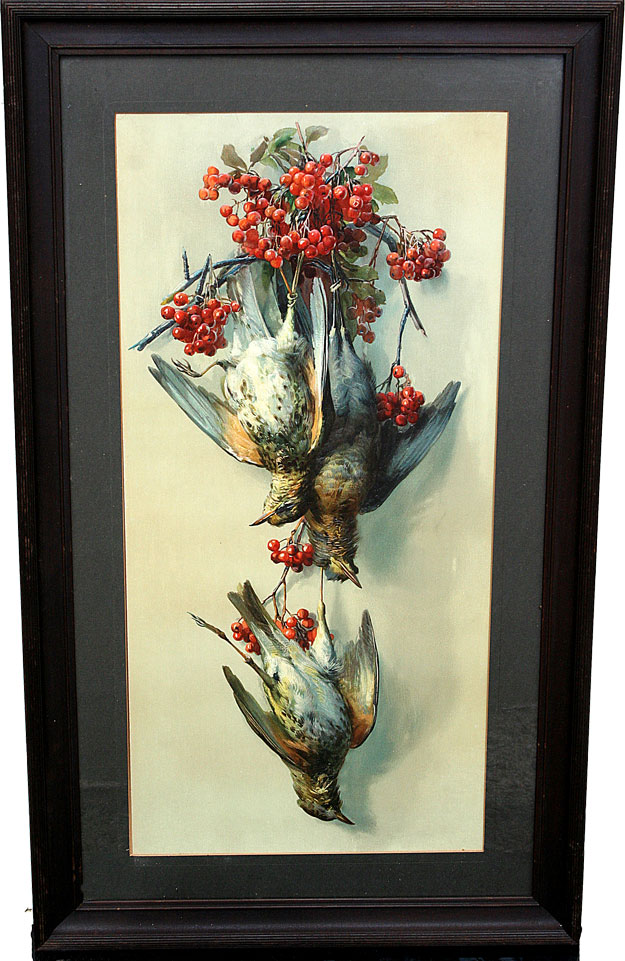
ITEM: CHROMO-LITHOGRAPH
DATE: LATE 19TH CENTURY
MATERIAL: WOOD (ORIGINAL FRAME), PRINT ON CONTOURED CARDBOARD
PROVENANCE: NEW YORK CITY
LOCATION IN SUITE: FDR’S BEDROOM
SIZE: 22 X 38″
ADOPTION PRICE: $300
Now, I’m hoping that someone is going to love this as much as I do. I realize this picture of a brace of pheasant is not exactly to modern taste, but I’m guessing that it would have been exactly to FDR’s, given his love of ornithology. (Remember our president-resident was an avid hunter and taxidermist since he was a boy. Birds were his passion) What’s really interesting about this piece, and what you can’t see in the picture, is that the image is three dimensional – the chromo-lithograph has been bonded to pressed cardboard, in a way I’ve never seen before: the feathers are raised and articulated, the berries rounded, you can even see mock brush strokes to emulate a fine oil painting. The dealer I purchased this from had four others depicting fishing and hunting scenes, and said these were the only ones he had ever seen in two decades in the biz.
•••
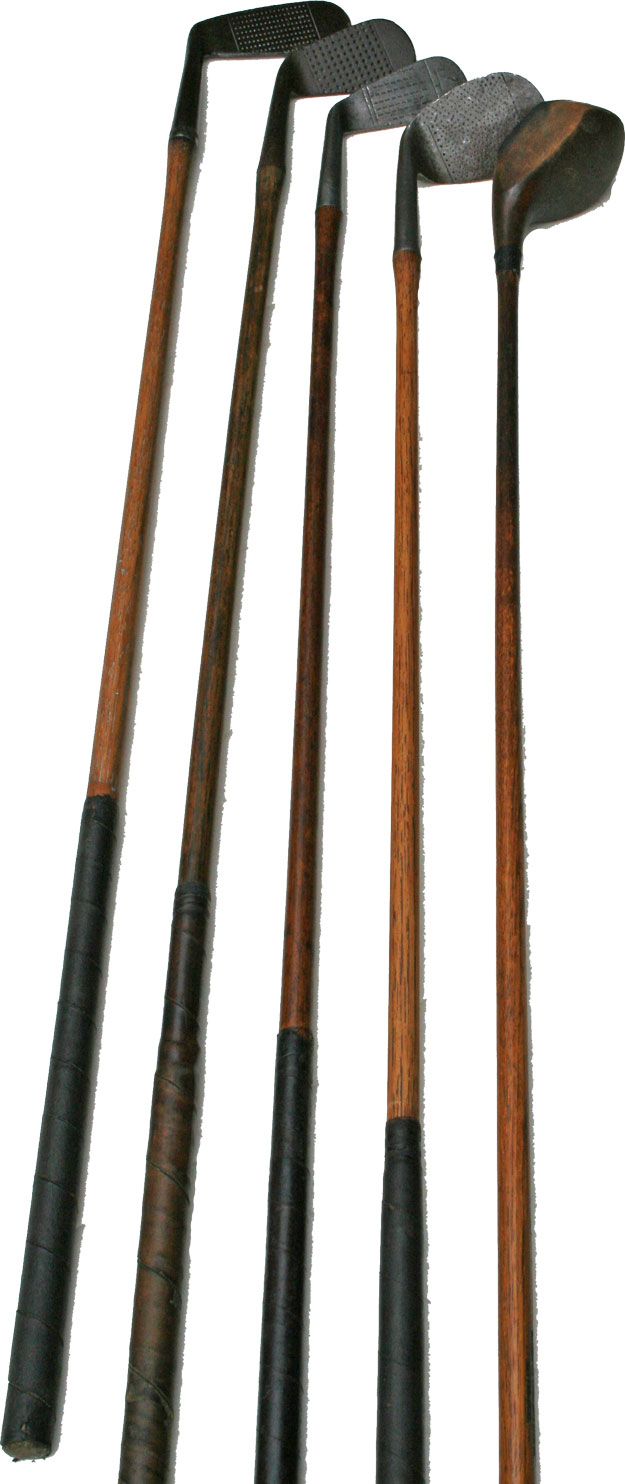
ITEM: SET OF FIVE PERIOD GOLF CLUBS
DATE: CA 1900
MATERIAL: WOOD, METAL, LEATHER
PROVENANCE: GENERAL
LOCATION IN SUITE: LATHROP’S BEDROOM
SIZE: CA 3′
ADOPTION PRICE: $220
Now here’s something that should tickle the cleats of the golf fans among you. We found an retired pro golfer to put together this basic set of early 1900’s clubs for us. Both Lathrop and FDR golfed (FDR badly, according to LB) and Lathrop especially would have had a set with him in Cambridge: his mother was the first woman amateur national champion, in 1895. The entire Brown family golfed together, and we have several pictures in the Suite of them on the links. Unfortunately, we were not able to find a case in good enough condition. If anyone has a golf bag in canvas or leather with a 4″ opening (common to that period) that they would like to donate, please let me know!
•••

ITEM: FOOTBALL
DATE: PRE-1905
MATERIAL: LEATHER
PROVENANCE: CONNECTICUT
LOCATION IN SUITE: STUDY
SIZE: 9″
ADOPTION PRICE: $400
Oh, what a beauty! This is an INCREDIBLE rarity, as very few footballs survive from this period. According to David Patterson, in his excellent article How the NFL Football Got Its Shape, “the football’s nickname of pigskin explains a lot of its history. In the early days, before Charles Goodyear made better use of rubber, balls for early rugby, then football games were made from inflated pig bladders. They were relatively round, durable and in plentiful supply. Later versions covered them in a leather skin, stitched together by laces. Those laces are still on today’s balls, even though they’re not needed for closure. Players use the laces to better grip the ball.Even when pigs were spared in favor of rubber versions in the late 1800s, the early versions were difficult to blow up manually. Their ultimate shape varied from game to game as the bladders were inflated. Moving into the new century, the quality control improved, but the watermelon shape was retained. Over the years, as production methods matured, the ends of the ball became even more pronounced. With all leagues promoting the forward pass, being able to grip the ball with one hand, as well as throw a spiral pass, has ensured the current shape will be retained.”
The forward pass, by the way, is how we can date the ball: the pass was part of an intercollegiate agreement signed in 1905 which attempted to reduce fatalities on the field, and rounded balls like this one quickly became outdated. (Pointed balls better facilitated the newly permitted pass.) Interestingly, another idea to decrease football injuries was to increase the side of the field, on the theory that more room meant fewer deadly collisions. This plan was vetoed by Harvard, who had just, in 1903, completed a fixed-width ferro-concrete stadium, one of the first in the country, and was not about to rebuild. The field has been the same size ever since.
We acquired this rare and costly item for two reasons: it recalls, like nothing else, the football mania that gripped Harvard during FDR’s tenure, as well as the fact that Lathrop, huge fan, managed both the Freshman and Varsity teams, and received a varsity “H” for his efforts.
•••
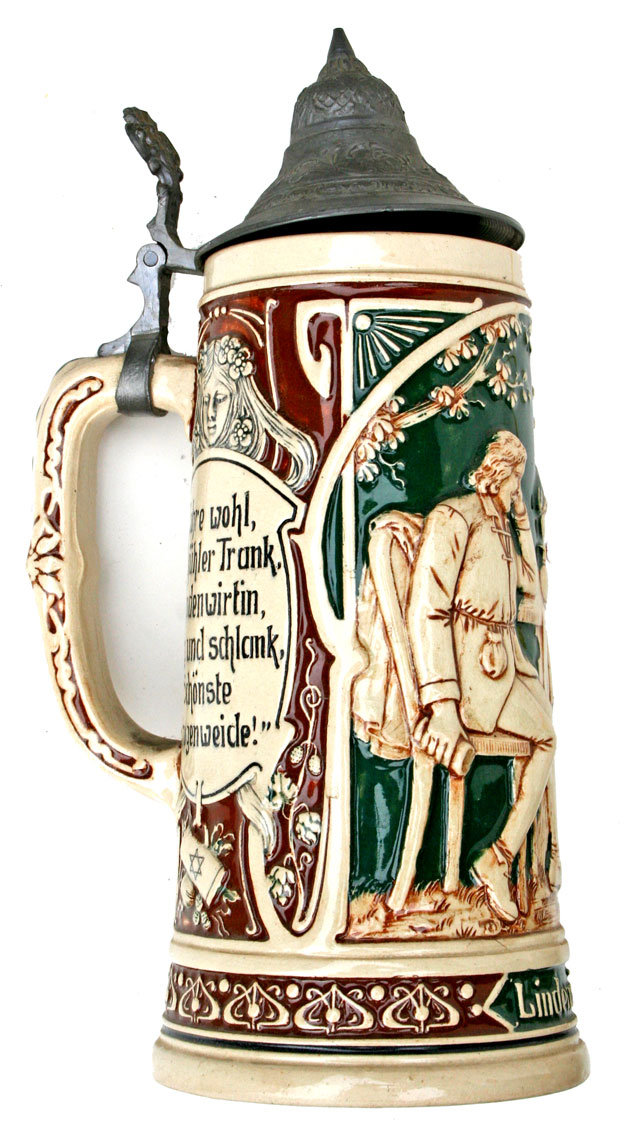 ITEM: BEER STEIN
ITEM: BEER STEIN
DATE: PREWAR
MATERIAL: CERAMIC AND METAL
PROVENANCE: GERMANY
LOCATION IN SUITE: STUDY
SIZE: CA 10″
ADOPTION PRICE: $75
This is the first in an odd half dozen or so steins we plan to acquire. Steins were a common feature in almost every room, inevitably hung beneath the mantle for use on “beer nights.” This is a particularly nice prewar example from Germany with classic detailing.
•••
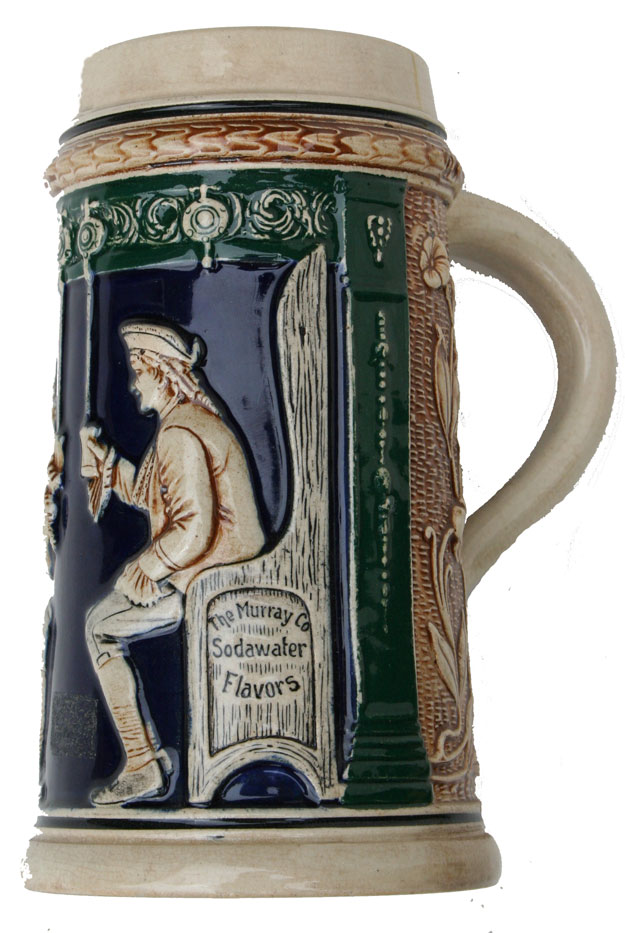
ITEM: BEER STEIN
DATE: CA 1905
MATERIAL: CERAMIC
PROVENANCE: BOSTON
LOCATION IN SUITE: STUDY
SIZE: CA 10″
ADOPTION PRICE: $75
Another stein, this time one of the sub-genera of advertising steins common at the turn of the century. The Boston firm, Murray Co, produced soda waters, which is not as curious as it sounds: businesses of all types commonly used the ubiquitous stein to get out their advertising message.
•••

ITEM: FOLDING SHELF & DRUG TIN
DATE: CA 1900
MATERIAL: (shelf) WOOD; TIN
PROVENANCE: USA
LOCATION IN SUITE: BATHROOM
SIZE: CA 15″
ADOPTION PRICE: (shelf) $100 (tin) $25
These little ball and stick shelves are surprisingly rare, especially folding ones like ours. (The shelves pop out, and the sides fold flat for storage. Very handy for a student!) This great piece will be mounted over the tub, and house a collection of period patent medicines and other period drugs. (Note to Administration: all benign!) A 1901 tin of “Fresh Seidlitz Powders” begins our collection.
•••

ITEM: FOLDING GARMENT HOOKS
DATE: CA 1880
MATERIAL: IRON, WOOD
PROVENANCE: USA
LOCATION IN SUITE: BATHROOM
SIZE: CA 36″
ADOPTION PRICE: $100
This clever item will allow guests to hang towels or clothes in a bathroom from an age before towel racks. Very intelligently designed, the hooks fold flat in an ornamental pattern when not in use, ideal for the space we have in mind behind the door. While this piece, with its Eastlake styling, predates the Suite by a few decades, it’s so handy that I’m thinking it’s one of those essentials Sara insisted FDR take from Springwood: “Franklin, don’t forget those interlocking hooks for your bathroom; I notice there was nothing installed in Westmorly Court, and you wouldn’t want to damage your linens!”
•••
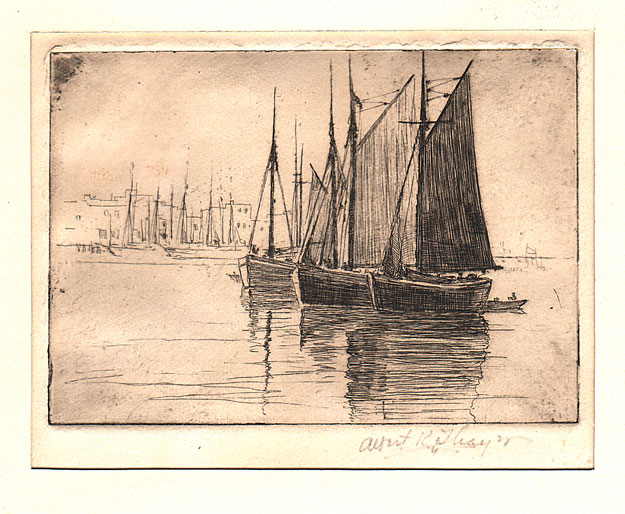
ITEM: SHAY ETCHING
DATE: ?
MATERIAL: PAPER
PROVENANCE: GLOUCESTER
LOCATION IN SUITE: FDR’S BEDROOM
SIZE: 6″ X 5″
ADOPTION PRICE: $85
This little gem I found for $10. It’s signed Albert Shay; the back has a framing label from Gloucester, Massachusetts. Stylistically, it’s very much of the period, and the subject matter is spot-on for an enthusiast of all things nautical like FDR. The adoption cost includes a new mat and frame to restore this little beauty to its rightful pride of place.
•••
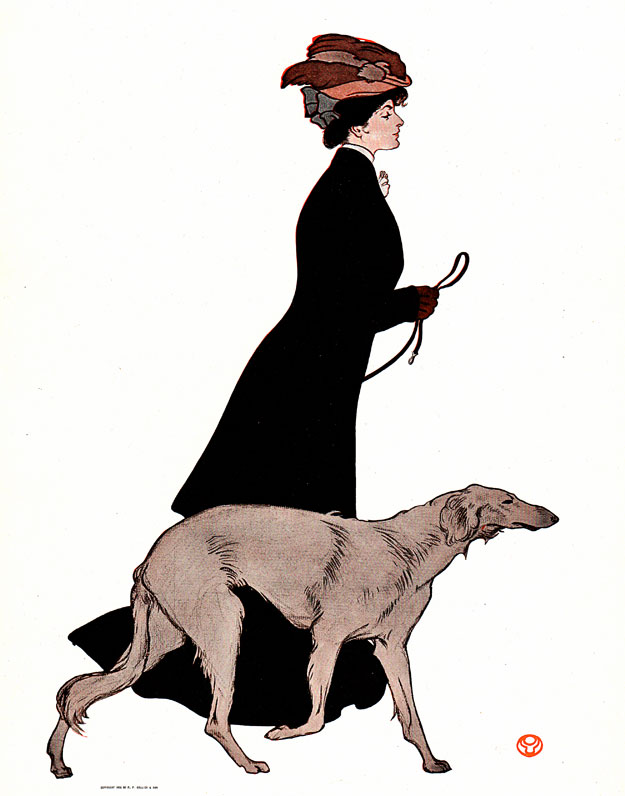
ITEM: ORIGINAL PRINT
DATE: 1905
MATERIAL: PAPER
PROVENANCE: NEW YORK
LOCATION IN SUITE: FDR’S BEDROOM
SIZE: CA 12″ x9
ADOPTION PRICE: $100
OK, so technically this was copyrighted in 1905, but I’m invoking president’s privilege here; who’s to say it wasn’t drawn in 1904? Here’s why I’m willing to fudge: it’s an original William Penfield from Colliers, the same Penfield who painted the murals in the Randolph breakfast room in 1897. Highly collectible, it’s a beautiful image, very much in Gilded Age style. Adoption cost includes framing.
•••
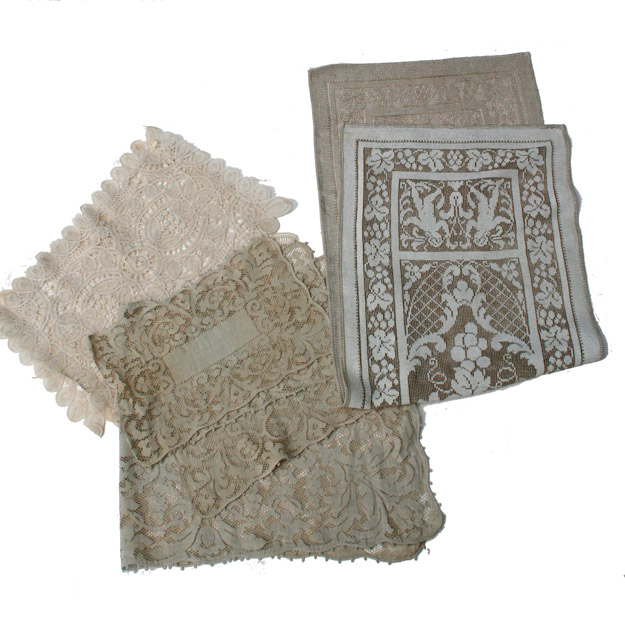
ITEM: PERIOD FURNITURE LINENS
DATE: CA 1880-1910
MATERIAL: LINEN
PROVENANCE: VARIOUS
LOCATION IN SUITE: BEDROOMS
SIZE: VARIOUS
ADOPTION PRICE: $75
I found a wonderfully knowledgeable vendor at Brimfield who will be helping us select period linens for the tables, mantels, beds etc. These are all hand-stitched pieces, mind-bogglingly detailed. A huge find, and critical to Victorian decor.
•••
SO THEN, have I whet your appetite to help us? I hope so!
If so, leave me a note below in the comment section (or email) as to what item you’d like to adopt, and I’ll be in touch. We’ll be building the official “Adopt an Antique” pages over the next weeks to register your gifts. First come, first commemorated!
As always, our thanks.
